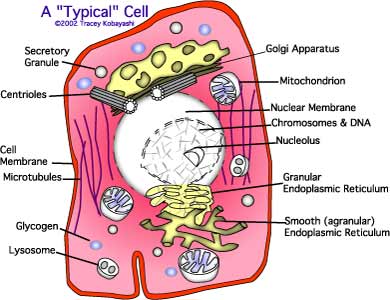
PE 9A Information
Section 1: Introduction
Tracey Kobayashi
50 Phelan Ave, NGYM
San Francisco, CA 94112
(415)452-7311
tkobayas@ccsf.edu
PE 9A: Fit or Fat
College & Career Ed
PE 50: Fitness Center

IM Me!
AIM - TKatCCSF
Yahoo - tkobico
ICQ - 155909399
Intro | Facts
Cardio | Strength
Nutrition | Diet Industry
Resources
References
When contemplating health, we tend to focus on bodily function and absence of disease, but the World Health Organization separates it into three main components: physical health refers to bodily function (including physical fitness) and absence of disease; psychological health encompasses the ability to process both logical and emotional thought; social health deals with one's interactions with others. All three components depend on one-another and contribute to complete health, and this integration of components involves a human effort to maintain balance.
This class emphasizes maintaining and/or improving physical fitness, focusing on body composition, by facilitating lifestyle changes. Lifestyle, a major risk factor in the nation's top diseases leading to mortality -- cardiovascular disease and cancer -- directly impacts physical health. On a typical American diet, 20 year old males show 20% closure of the coronary arteries; 35 year old males 50%. In early stages of heart disease, one may feel fine and even pass a stress test. In fact, there may be no symptoms until an artery is 90-100% closed.
Before We Begin
To better understand how a complex organism functions, let's look first at how a single cell works. Like a more complex organism, a cell contains everything it needs to maintain its life and functions -- it only needs to receive nutrition and dispose of waste. The following picture shows a generic cell.

Most body cells are equipped with most of these (or equivalent) structures and organelles, each with specific functions. Some functions include: energy production; protein formation; reproduction. Much of the cell's production processes are controlled by DNA. How does this apply to us? Our body contains specialized organs, with similar functions to those little organelles, which are controlled by our nervous and endocrine systems, to create protein, reproduce and eliminate waste. The Nervous System acts quickly and generally controls immediate responses to acute conditions, while the Endocrine System acts slowly over a longer time to control long-term changes. We will discuss in class some of the more specific functions these organelles have, and how those concepts apply to us.
Basic Bioenergetics
Your muscles have proteins (myosin) that react with another protein (actin) to create a muscular contraction. Myosin contains phospate molecules (ATP) that split and release energy, causing the myosin to release its hold on the actin and move to the next actin site. As ATPs keep splitting, the myosin continues on to successive actin sites. Note that this doesn't require oxygen to do, so this process is termed as "anaerobic." Unfortunately, your muscles can only store enough ATP to last maybe 10 seconds. If you need to do something for longer than a few seconds, your muscle needs a way to recycle or create more ATP within the cell itself. To do so, the body first breaks down glucose, also anaerobically, into an acid. This acid, with the help of oxygen (now making it an aerobic process) and fatty acids, is converted into ATP. The three energy pathways are explained in more detail below. All pathways are always at work, but activity is defined by the predominating pathway.
- Anaerobic Alactate or Phosphate Energy System: uses available immediate phosphate (energy) stores and lasts 4 to 6 seconds. Oxygen is not used and lactic acid is not produced. This system is used for high intensity work requiring power and speed and requires approximately 24-36 hours of low-intensity active rest between sessions.
- Anaerobic Lactate or Fast Glycolysis System: lasts up to 2 minutes. Glucose (carbohydrate) is broken down anaerobically (without oxygen). Produces lactate and hydrogen ions, making the cell acidic. If intensity persists, acidity shuts down the cell. The anaerobic system is stressed in what are typically termed as speed endurance workouts, which improves lactate tolerance and requires about 48-72 hours of recovery.
- Aerobic System: takes about 3 minutes low to medium effort to dominate and uses by-products from the glycolysis process and fats in the presence of oxygen to produce energy without generating fatigue-producing by-products. Protein may be diverted from other functions to create more glucose if needed, as in workouts lasting over an hour or sooner in less-fit individuals.
Most activity for this class will be classified simply as either anaerobic (combining alactate and lactate) or aerobic. The following is a simplified description of each type of activity.
-
Aerobic
- Large groups of muscles work for extended time, blood pressure and heart rate increase slowly and steadily.
- Uses oxygen as body burns a greater percent of fat for fuel.
- Many benefits for the cardiovascular system.
- Improves muscle efficiency and tone.
- Activity can continue indefinitely
-
Anaerobic
- Short burst of intense activity, quick rise in blood pressure and heart rate.
- Burns mostly muscle glycogen for fuel
- Improves strength and speed of activity (benefits musculo-skeletal systems).
- Develops lean body mass
- Activity must stop or slow down within a relatvely short amount of time.
In a nutshell, the point where activity switches from aerobic to anaerobic (defined by lactate buildup in the system) is the Anaerobic Threshold. Threshold, sometimes given as a percent of maximum heart rate, can increase with aerobic training. This is a glycogen-sparing adaptation, as glucose is a premium fuel: fat stores are almost inexhaustible compared to glycogen; the only fuel the nervous system uses is circulating glucose; and glucose is needed for fat metabolism to take place.
Control Systems
The body has two methods of controlling function: the Nervous and Endocrine Systems.
The Nervous system is responsible for short-term responses to immediate stimuli. For this course, we are concerned with the Autonomic System, which controls bodily functions. In times of perceived stress, the Sympathetic branch of the Autonomic system increases metabolic rate, circulates lipids (fats) to be used for energy, and otherwise prepares the body for physical action. When the perceived stressor is gone, the Parasympathetic branch takes over, causing the body to relax.
The Endocrine system controls long-term function by releasing substances called hormones. Hormones create specific actions in the cells they activate, and generally very little is needed to create a large effect. The hormones typically associated with fitness are growth hormone from the anterior pituitary, thyroxine from the thyroid, cortisol secreted by the adrenal gland and insulin and glucagon from the pancreas. These hormones influence metabolism in one way or another, usually by controlling carbohydrate, fat and protein usage. Let's look a little closer at them.
| Hormone | Carbohydrate | Fat | Other |
|---|---|---|---|
| Growth Hormone | Promotes storage and then circulation. Decreases use. | Increases mobilization and utilization. | Increases protein synthesis rates and growth. Secretion based on nutritional or stress status (starvation, trauma, excitement, hypoglycemia, exercise |
| Thyroxine | Promotes usage. | Promotes usage. | Increase protein transcription and thus functional activity through the body. |
| Cortisol | Promotes gluconeogenesis (create glucose from other substances, such as protein), Decrease cellular usage of glucose, increase glucose circulation. | Promotes fat circulation and utilization. | Released in response to stress or damage. |
| Insulin | Increases cellular uptake, usage and storage, and storage in the liver. | Can decrease usage if excess insulin is present. | Released in response to high blood glucose levels. |
| Glucagon | Glycogenolysis (transforms from storage to circulating form) in the liver. Gluconeogenesis. Increases circulating levels. | Can increase usage. | Secreted in response to low blood glucose or high circulating amino acid (protein). |
As discussed in the previous section, these hormones control the metabolic substrates. As we become fitter, we find that these hormones play a major role in preserving glycogen stores so glucose can be readily available between meals for use by the nervous system, but also keeping excess fat metabolism in check to prevent blood lipid problems. Dysfunctions in these systems can exacerbate other problems such as obesity or poor nutritional habits.
Physical Fitness
Health-related physical fitness, which for this class encompasses neuromuscular function, cardiorespiratory function and body composition, influences general functioning (are you able to walk without becoming winded?) and physical health. Many fitness measures are used as indicators of physical health. For example, being over weight and/or over fat are associated with several diseases including arthritis, diabetes and high blood choloesterol levels.
Neuromuscular function encompasses muscular strength and endurance, as well as flexibility. Leverage aside, muscular strength is directly proportional to the amount (mass) of muscle tissue. Muscular endurance depends on biochemical and cellular efficiency during extended activities. Flexibility is a reflection of a muscle's extensibility, and is determined by measuring range of motion around a joint. Physically fit individuals maintain muscle mass efficiently, require more energy, and use fat for fuel more readily while sparing carbohydrate. When one is unfit, lean muscle mass can be lost, and energy requirements decrease. Consequently, a fit person burns more calories than an unfit person, and given equal caloric intake, the unfit person stores more calories as fat.
Cardiorespiratory function refers to both cardiovascular and respiratory efficiency. When one is fit, the lungs can take in more air and expel more waste gases, the heart can pump more blood with each beat, and the blood vessels can bring more nutrients to the working muscles. Because aerobic (fat-burning) metabolism depends on oxygen usage, a fit body is better at delivering necessary oxygen and removing waste carbon dioxide, allowing the individual to be a better fat burner.
Body composition refers to body density, which implies percent of body fat. A leaner person doesn't have as much potential energy in the form of stored fat as a fatter person, but is usually better at utilizing available fat.
Physical Activity and Training
Physical activity aids fitness development and body composition control. During activity, the Sympathetic Nervous System increases energy expenditure to meet the needs of the task. During the rest period after activity, the body implements long-term changes, typically via hormone release, in case the same stressor (activity) occurs again, so it will react more efficiently -- known as Training Effect or Supercompensation.
Hans Selye is credited with naming General Adaptation Syndrome, the generalized reaction to acute (immediate) stresses, such as exercise -- this reaction is also called the Sympathetic Response, as it is controlled by the Sympathetic Nervous System. GAS prepares the body for activity by: increasing respiration to deliver more oxygen and dispose of more carbon dioxide; increasng heart rate to circulate blood to working muscles; adapting blood vessels to accommodate increased flow; releasing fat for use as energy. The sympathetic systems of fit people tend to respond more readily than those of the unfit.
The stress of activity brings the body's status below equilibrium, stimulating the body to improve its equilibrium level to prepare for similar stresses. This overcompensating phenomenon, known as Training Effect or Supercompensation, occurs within 48-72 hours after activity ceases. If recovery continues beyond 72 hours with no training session, the body slowly returns to pre-workout status, or a lower state, if inactivity continues. This decline is called detraining or involution. If recovery periods are too short, the body can't fully recover -- burnout, plateauing and injury can result. Training Effect is specific to type of activity: aerobic training increases cardiovascular and respiratory efficiency, making one a better fat burner; strength training increases lean tissue, which increases metabolic rate so one burns more overall calories.
Training Principles
Fitness programs are designed around general guidelines, known as training principles. Training principles define how training variables are set.
Overload: A stress imposed on a system that is greater than its normal. Supercompensation is a reaction to overload.
Moderation: Keeping training loads within reasonable limits. Moderation is especially important when beginning a fitness program, as that's usually when people tend to overdo.
Recovery: Allowing the system to recover -- if intensity is too high for too long or volume increased too quickly, the body can't rebuild adequately. In long exercise bouts (over an hour), glycogen stores deplete, and protein is diverted from other functions. The body requires 48 to 72 hours to replete glycogen stores (5% repletion/hour is considered a good rate) and protein after a long or hard work-out. Recovery may be passive or active. Passive recovery is the body' natural recovery course. Active recovery involves taking steps to recover efficiently. The best active recovery is correct workload -- excessive volume and intensity results in insufficient recovery, too low may under-stress the system. In general, aerobic workouts lasting over an hour give diminishing returns for output. Stretching, following a hard day by an easy day or alternating activities each day, getting a massage after a hard workout, and resting adequately, are all forms of active recovery.
Specificity: Personalizing training to goals. The body develops specifically to activities performed. For example, swimming and running benefit the cardiovascular system. However, swimming strengthens the upper body more than running, which benefits leg strength more.
Progression: Increasing workload as the body adapts in order to keep improving.
Variability: Changing the workout routine to maintain interest and fend off staleness. Specific activities induce local changes in the systems worked -- varying activities ensures working the whole body. Changing activity variables (load and reps in strength training, time and intensity in cardio training), also enhances variability.
Variability and Periodization
Periodization is the periodic changing of the training program, achieved by changing training variables or activities performed. The following example illustrates the aformentioned principles. Our example is an elderly female. She is sedentary, has high body fat and the beginnings of osteoporosis. After the restoration phase, she can begin successive cycles again with General Conditioning.
Possible Phasing for an Elderly Female Beginning a Fitness Program
| Phase: | Preparation 2 weeks |
General conditioning 8 weeks |
Specific Fitness 8 weeks |
"Peak" 4 weeks |
Restoration 2-4 weeks |
|---|---|---|---|---|---|
| Goal: | Acclimate to an active lifestyle. | Gradually build volume keeping intensity low. Build general fitness. | Increase volume and/or intensity. Work more specifically. | Increase intensity while lowering volume. Increase efficiency. | Recover while encouraging active lifestyle. |
| Aerobic Exercise | Start 15-30:00 3 x per week easy talking pace. | Increase session length up to 1hr, no more than 6 days each week. | Decrease session length to 30 min, 3-5 days/week. Higher intensity. | 20-30:00 3-5 days/wk low intensity | |
| Strength Training | 2 sets x 12-15 reps, light or no load, 6-8 exercises total for major groups. | 3 sets x 10-12 reps, moderate load, 8-12 exercises for major, plus "focus" groups. | 3 sets 8-10 reps, moderate-high load, 6-10 exercises major plus focus groups. | 2 sets x 8-12 reps light load 6 exercises, or alternate activity. |
Workouts within a phase also vary weekly, so volume and/or intensity are increased gradually instead of in discrete jumps. Every few weeks, workout load should be decreased so the body gets an opportunity to "recharge." Actual workouts will vary with the individual. To prevent overtraining, increase total workout volume (sets x reps x load for strength) for 3 weeks, then decrease (unload) volume for a week.
Sample Load/Unload Phase
| Week 1 | Week 2 | Week 3 | Week 4 (unload) |
|---|---|---|---|
| aerobic: 3x20 min @ 60% strength: 3x10 @ 65% |
aerobic: 3x25 min @ 65% strength: 3x10 @ 70% |
aerobic: 3x30 min @ 65% strength: 3X10 @ 75% |
aerobic: 3x20 min @ 65% strength: 3x10 @ 65% |
Activity vs. Training
The difference between activity and training is that training involves performing an activity to a set of standards. Does this mean activities which aren't classified as physical training are useless? No! Even if without reaching target heart rate for a set time, physical activities use energy, and enforce an active lifestyle. A healthy lifestyle depends on not only training you put in, but also on keeping generally active. This class starts by focusing on general activity and then aerobic training, which makes one a better "fat burner".
Intro | Facts
Cardio | Strength
Nutrition | Diet Industry
Resources
References